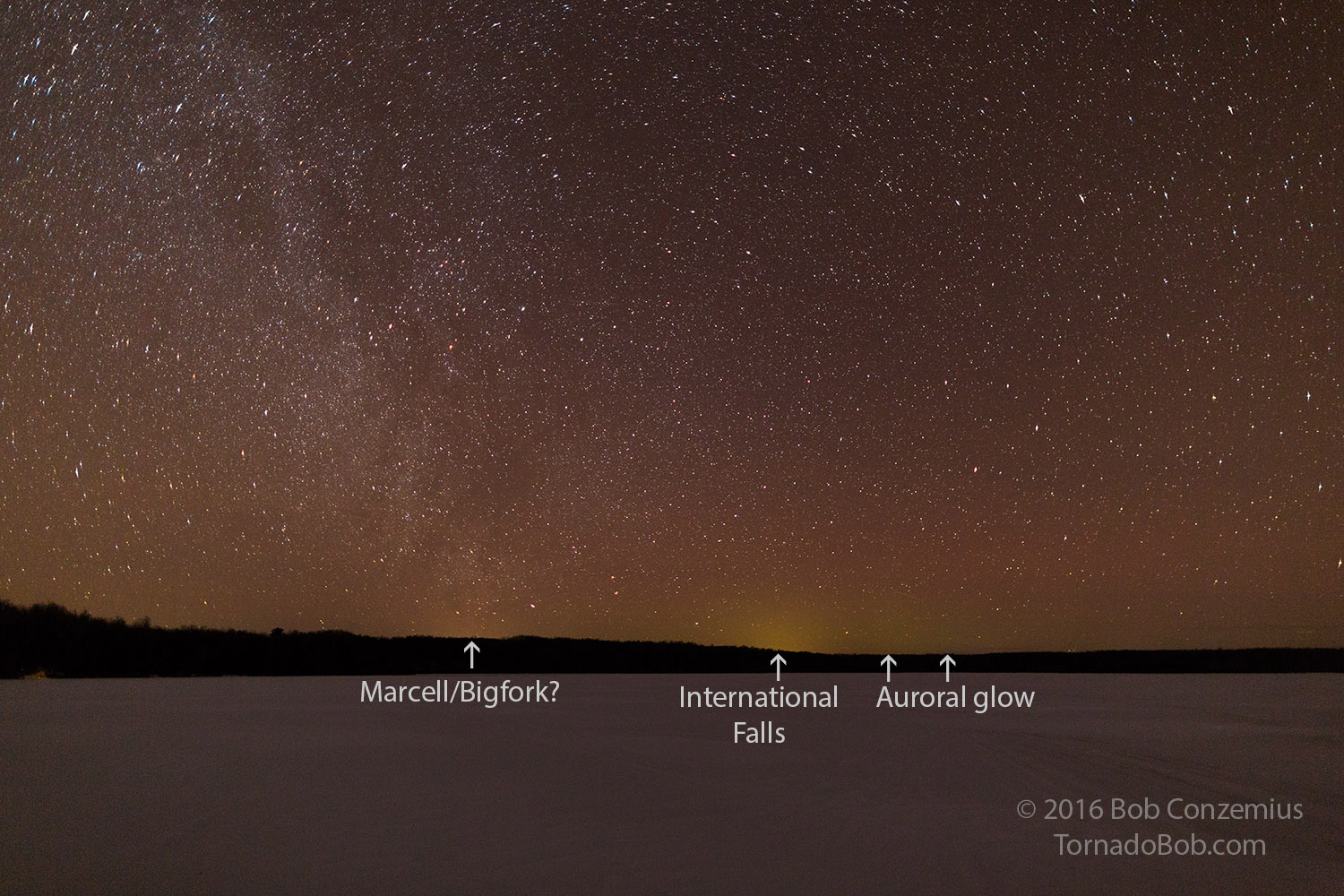March 4, 2016 Night Shots
Wabana Lake
Wow! Finally, we had a clear night with no moon and no clouds. For the first time since what seemed to be last Fall, the conditions were right for some astrophotography. On these nights, it's often possible to detect auroras with a camera, even though the skies are visibly pretty dark to the north.
To my surprise, I found that I could see the scattered light from city of International Falls, 80 miles (130 km) to my north. I had not noticed this before from any of my shooting locations in Itasca County. I think the relative lack of auroras or airglow made the city lights more visible from a distance. In essence, the rest of the sky was darker than it usually is, so that allowed the glow of scattered light above cities to stand out. As it turned out, I came back three nights later and took the same pictures with more of a glow in the sky.
I did get a little bit of an auroral glow on the camera for a minute or two. It's only possible to detect it by looking at consecutive images to see the transient auroras move from one spot to another along the northern horizon. The auroras usually have a particular shape to them that allows one to distinguish them from other transient lights, such as cars and trucks. I considered the possibility that what I saw was a truck, but there were no roads close enough in that direction where trucks or cars could have cast enough light to be distinctly visible on the images.
 |
|---|
| Looking to the north at 9:07 PM CST from Wabana Lake. |
I also turned my camera to the west to take a few pictures of the Milky Way.
| Trees and the Milky Way. |